Description
For many people, Mongolia has always been associated with its cold winter, but did you know that Mongolia has not the coldest winter and has a lot to offer together with its scenic beauty and specialties? Mongolia has been successfully organizing various thrilling winter activities in recent years. The ice festival is one of those winter events which has been held since 2002 every first weekend of March in northern Mongolia on the western shore of frozen Lake Khuvsgul. And imagine yourself being in the Gobi Desert in the winter. Snow-covered plains, mountains, and dunes definitely add paint to the beauty of the desert. Except for its natural charm, Gobi is also famous for its flora and fauna, dinosaur findings, nomads, and camels. One of the camel related popular events is Camel Festival. Already about 20 years Camel Festival has been organized every year 7-8 March by local herder communities in order to preserve and protect the two-humped Bactrian Camel population in Mongolia. Another major contribution of the festival is to support the local economy, to increase local income and productivity thru tourism. It’s also playing a huge role in passing the Mongolian rich culture of camel breeding to the upcoming generation.
What's included
- Transfers upon arrival and departure
- Guide service at all times.
- In the countryside all lodging will be in ger camps / nomadic family’s Ger
- All meals are provided as stated in the itinerary.
- Ground transportation: in the countryside driven by 4WD van
- Park entrance fees
- Horse and Camel ride
- Sightseeing as per itinerary
- 1.5 liter of drinking water supply per day per person
- Festival tax
What's not included
- Accommodation in a hotel or hostel in Ulaanbaatar
- Hotel extras, such as telephone calls, bar bills, and laundry services
- Travel insurance, medical insurance
- Visa application fees
- Alcoholic beverages
- International airfare or train ticket
- Changes in arrival/departure flights
- Gratuity to guides and drivers
- Additional services
- Any charges of major force beyond our control (e.g. imposition, quarantine restrictions, etc…)
Packing list
This is a suggested packing list, which you should feel free to adjust to suit your needs. Please refer to our travel guide for more detailed information.
- backpack or soft bag
- spare batteries/bulb
- personal medications
- winter coat
- winter boots
- fleece jacket or wool jumper
- cotton t-shirts
- long sleeve shirts
- winter long johns
- winter socks
- underwear
- sun glasses
- resealing (Ziploc) plastic bags
- binoculars/camera
- watch/ alarm clock
- money belt/ pouch
- scarf
- winter mittens
- winter woolly hat
- insurance confirmation copy
- emergency contact number
Important notice
Since the trip will be in the mountainous, a high altitude region of Mongolia, and the weather can be very unpredictable and you might even experience snow, we suggest you bring the following:
- Warm coat
- Gloves
- Scarf
- Woolen hat
- Long underwear / long johns
- Woolen jumper
- Woolen socks
- Sleeping bag (for -10 to -15C)
Please bring the above in addition to your usual gear and items for such a trip. Only Russian jeeps /minivans are available in this region
-
Uran Togoo Extinct Volcano
Ulaanbaatar – Uran Togoo Volcano 565km
- Start to drive towards to Uran Togoo an extinct volcano crater which is located in Bulgan province on the way to Khuvsgul Lake. Uran literally meaning artistic is a crater almost looks like that its ridges has been carved in very fine craftsmanship. Diameter of circled crater ridge almost about 500ms with 15m depth and surrounded with trees will add color to the scenery.
- Optional climbing and hiking
- Lunch at a local restaurant
- Overnight with a nomadic family (L+D)
-
Uushigiin valley- Khuvsgul Lake
Uran Togoo- Khuvsgul Lake 410km
- Continue driving to Uushigiin valley where you can see complex of deer stone monuments erected besides the burial sites dating back to early Bronze Age era over some 4000 years ago. Deer stones were part of the ancient funeral practices and were mainly dedicated to express common people’s mourning over their great warriors and military leaders. There are 14 deer stones and one of the exclusive monuments is a deer stone with a human face.
- Lunch picnic
- Drive to Khuvsgul Lake which respectfully referred as “Blue Pearl” or “Mother Sea “by locals. In the winter lake freezes over rapidly and creates an amazing crystal clear ice. The Lake is situated at the altitude of over 1650ms above sea level at the eastern foothills of Sayan Mountains close to Russian border. Khuvsgul Lake is the second voluminous lake that makes up 1% of world and 70% of Mongolia’s freshwater.
- Overnight at local guesthouse (B+L+D)
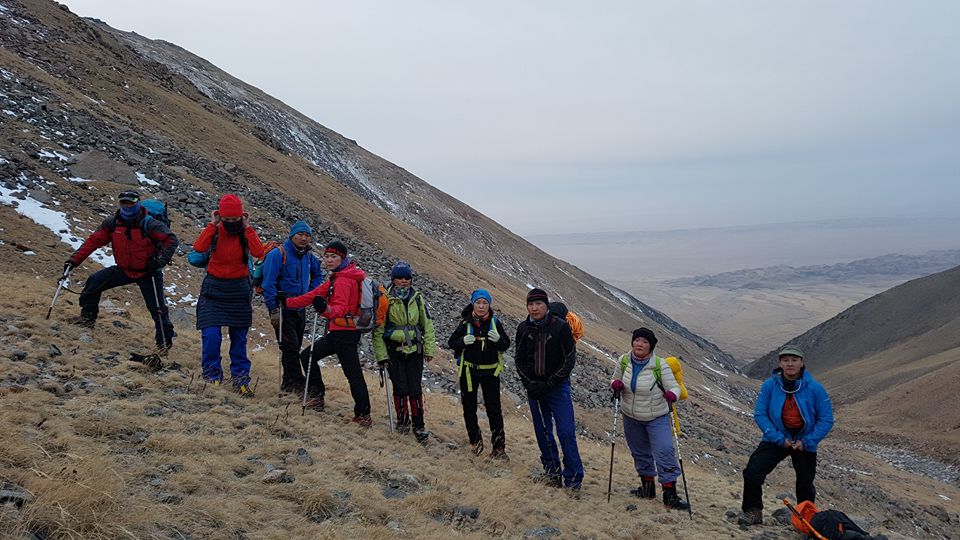
-
Opening of Ice Festival
- After breakfast, you will attend the Opening Ceremony of Ice Festival. Today games such as Ice carving competition and Ice Sumo wrestling will be taking place. As one of the traditional games to be played on the Ice, you will see Ankle Bone shooting. The Festival will also present Shaman Ceremony by reindeer people and national folklore performance. Later in the evening you can join locals and other guests for bonfire assisted with shaman rituals. Optional hiking and horse sledding.
- Overnight at local guesthouse (B+L+D)
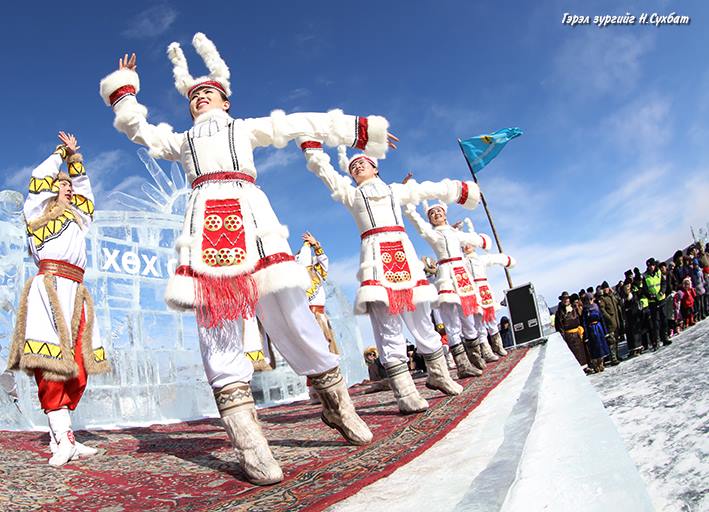
-
Ice Festival
- Today festival will continue with skater’s marathon and horse sled racing on the ice. On the sidelines of festival many other entertaining traditional games will be played, You would always have opportunity to enjoy or participate. It’s a perfect occasion to hang out with locals and have fun. Later on organizers will grant prizes for winners.
Khuvsgul Lake –Terkhiin Tsagaan Lake 450km
- After lunch, driving to Terkhiin Tsagaan Lake
- Overnight at nomadic family ger. (B+L+D)
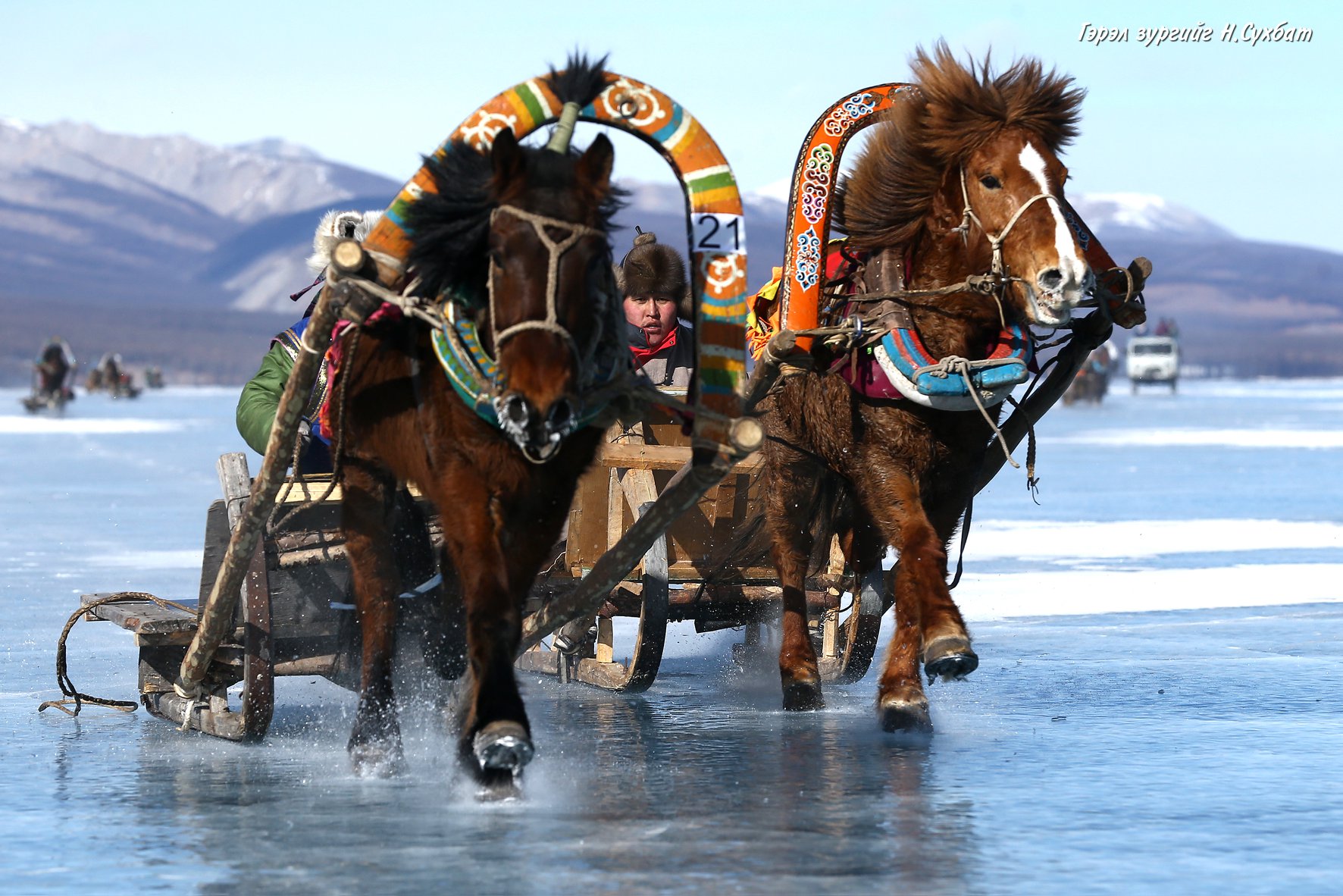
-
The former capital of Great Mongolian Empire, Kharhorin
Terkhiin Tsagaan Lake– Kharhorin 280km
- A morning drive will take us to Kharhorin, the former capital of Great Mongolian Empire in the 13th century. Although considered as an ancient capital, there are very few remains left from this historic place. We will visit the one of the largest and oldest Buddhist monastery named “Erdene Zuu” which was built upon the ruins and foundations of capital Kharhorin in 1586. Luckily it has survived communist purges in 1937 and was re-opened as a museum. Current Kharhorin is small village type settlement with over 3000 residents.
- Excursion to the local museum of Kharhorin city where you will explore traces of Mongolian history dating from early Stone Age to Great Mongolian Empire. The museum offers great collections of items that were found from various excavation and expeditions around Kharhorin and Orkhon Valley. Following the museum we will stopover by other sites such as phallic rock and Turtle rocks.
- Overnight at the ger guesthouse (B+L+D)
-
Ongi Monastery ruins
Kharkhorin –Ongi monastery 350km
- Continue driving to Saikhan Ovoo village of Middle Gobi province. Some smaller rocky mountains are beautifully set along the Ongi River where Ongi Monastery ruins are found. It’s a perfect place to have a time out before entering Khangai regions. Upon your arrival discover the site of Ongi lamasery which was unfortunately heavily destroyed in 1937. In 2002 some local lamas arrived at the once famous Ongi Monastery and began the restoration with very limited resources and much enthusiasm.
- Overnight at a nomadic family’s ger. (B+L+D)
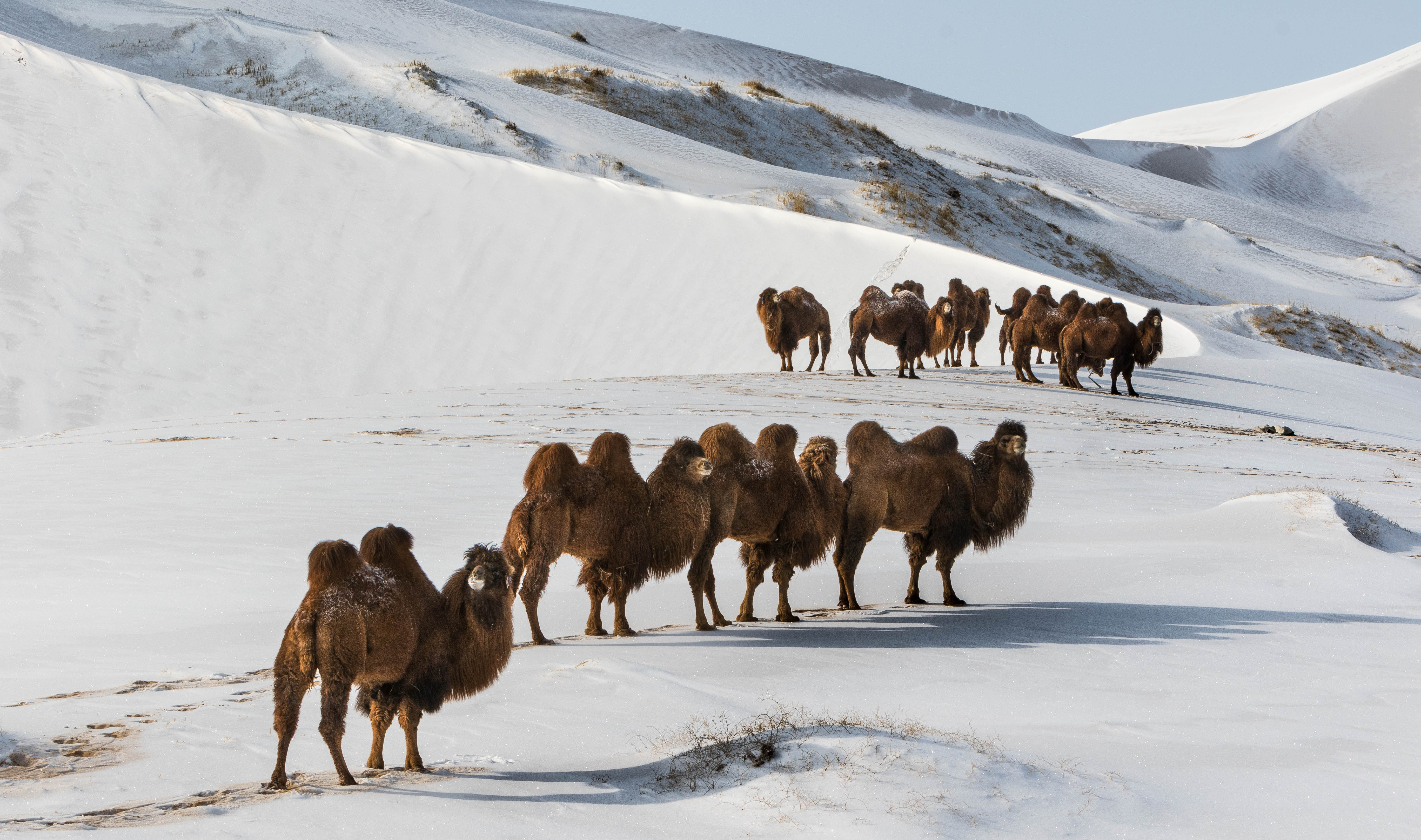
-
Flaming cliffs of Bayanzag and Camel Festival
Bayanzag- Ongi Monastery 150km
- Arrive at the cliffs of Bayanzag, most commonly known as “Flaming Cliffs” for its bister red color which is the cradle of dinosaurs. A Saxaul forest not far from the cliffs and cliffs themselves are true evidences of the time when our planet was still occupied by massive creatures-the dinosaurs. American explorer Roy Andrews Chapman was the first to reveal dinosaur fossils and eggs in 1922 from Bayanzag and other neighboring localities which are today displayed in Mongolian dinosaur museums in Ulaanbaatar and other museums around the world.
- Today we will attend The Camel festival which begins in Bulgan village with a “parade” of camel riders coming from different parts of Gobi regions. Competitions of the day will include “best looking couple on camelback”, most adorable male and female camels as well as a camel polo tournament which takes place in the central square. There’s also an exhibition of paintings by local children who participate in the drawing contest called “Camel– My Friend’’.
- Overnight at local guesthouse (B+L+D)

-
Camel Festival Day
- Second day of festival starts with a race of grown up camels, later followed by the racing of the two-year-old camels. Although Mongolians don’t bet on the race, for your own pleasure, you may put bets on the camels. The first three winner camels in each group are awarded with golden, silver and bronze medals. In the afternoon, one of the most awaited competitions begins. This is called "The Camel Rally", a competition demonstrating scenes of catching, taming, training young camels and, finally, loading a camel with an actual ger like nomads during their migration. There are several groups with five members, each of which have different roles in the contest. The closing ceremony takes place late in the afternoon when the winners will be presented their trophies and prizes.
- Overnight with a local family (B+L+D)
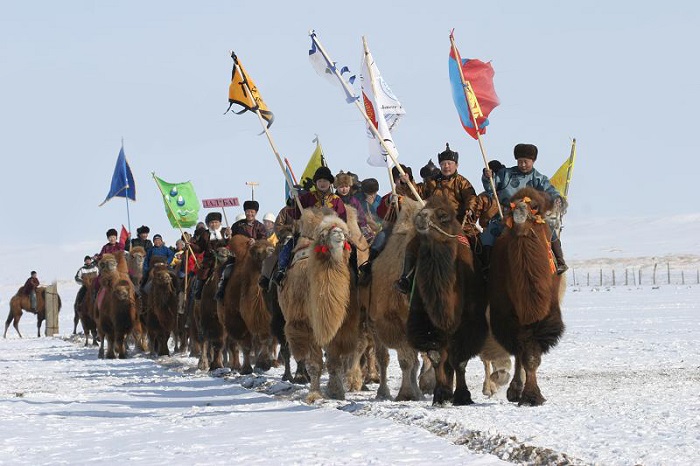
-
Khongor sand dunes
Bayanzag - Khongor sand dunes 150km
- Continue driving to west of the park to Khongor sand dunes which are known as the highest and biggest dunes in the country.
- Stop at Khongoriin Els or Khongor sand dunes. These are the most astonishing dunes of Mongolia with extension of over 180kms length and around 3-15kms width and average height is 80ms. The highest dune is 200ms and from the top these dunes you will capture amazing view of Gobi with the most beautiful sunrise and sunset. When you climb the dunes they shift and cause a sound of vibration which very much resembles to the sound of an airplane hence it’s also called Singing Dunes.
- Overnight with a local family (B+L+D)
-
Three beautiful mountains- Gobi Gurvan Saikhan
Khongor sand dunes –Three beautiful mountains 190km
- Today we will reach Gobi Gurvan Saikhan National Park which covers some chain of mountain ranges as the southern end of the Gobi-Altai Mountain range. Gurvan Saikhan literally meaning “Three Beauties” referred to the highest three peaks of the range which is almost over 2800ms.
- Optional hike either in Yoliin Am or Bearded Vulture’s canyon or Mukhar Shivert valley. Regarding the snowfall and shade in the canyon, oftentimes there formed a high layer of ice cover which sometimes will stay till mid-July. During our walk, we may either walk on top or bottom, or just see the parts of this ice. The canyon is surrounded with steep Rocky Mountains creating some shade which is pleasant to hike thru during hot days of Gobi desert. During out hike, you may notice some rodents such as pica and ground squirrel along with colorful wild flowers and plants. Although mountains are the home for wildlife like ibex, mountain goat and argali, the wild sheep, spotting these animals will purely depend on fortune.
- Overnight with a local family (B+L+D)
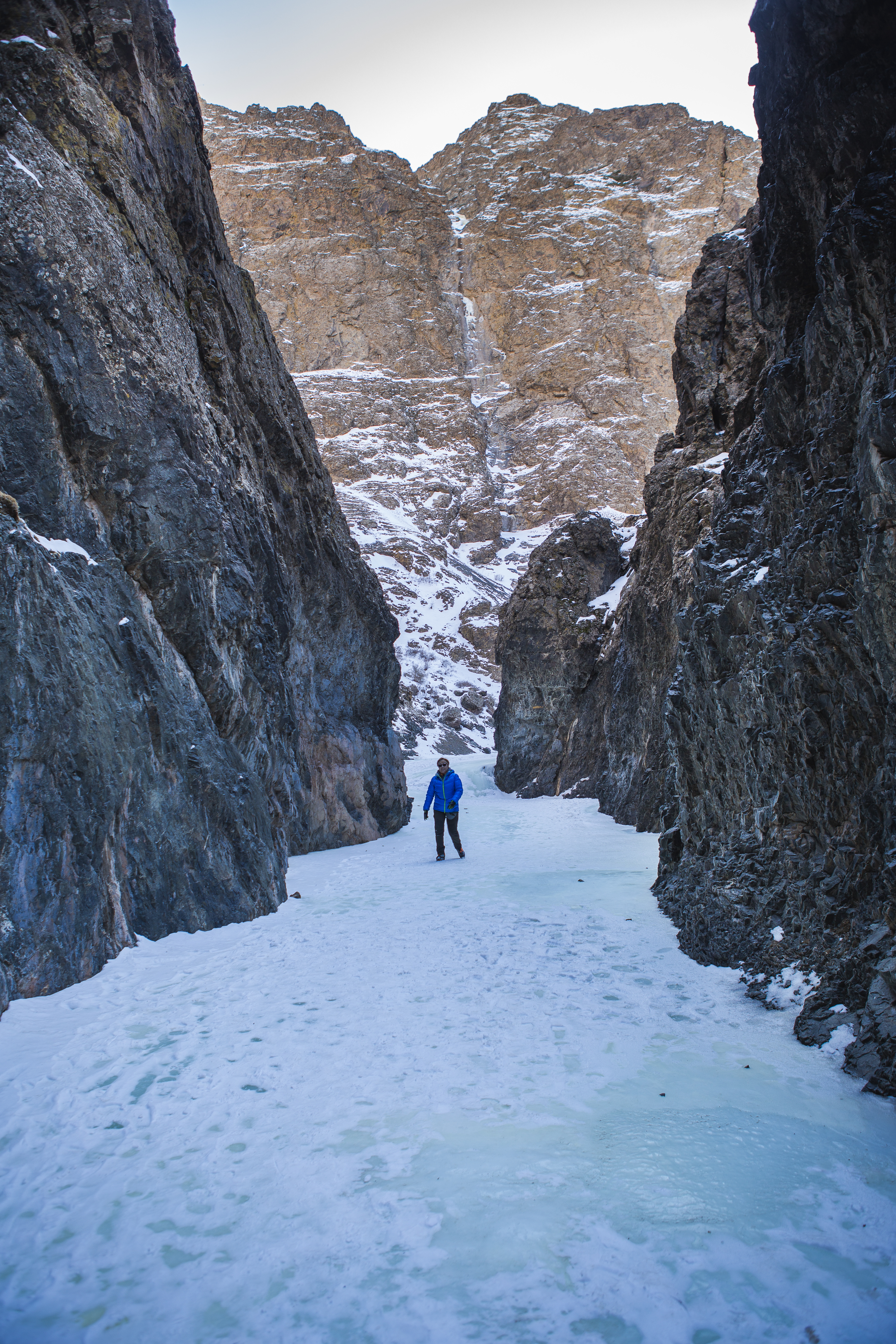
-
Great white stupa in the desert
Three beautiful mountain – Tsagaan Suvraga /White Stupa 220km/
- Today we will be driving thru vast and empty rocky desert and semi-arid steppe to reach out White Stupa. Mongolians always have admired and honored this unique natural formation of 30ms height, abrupt, stupa shaped slopes as White Stupa. The place definitely will remind travelers some lunar landscape with its mystery of fossils hidden underneath and stunning color combinations. The area deemed to be bottom an ancient ocean.
- Overnight with a local family (B+L+D)
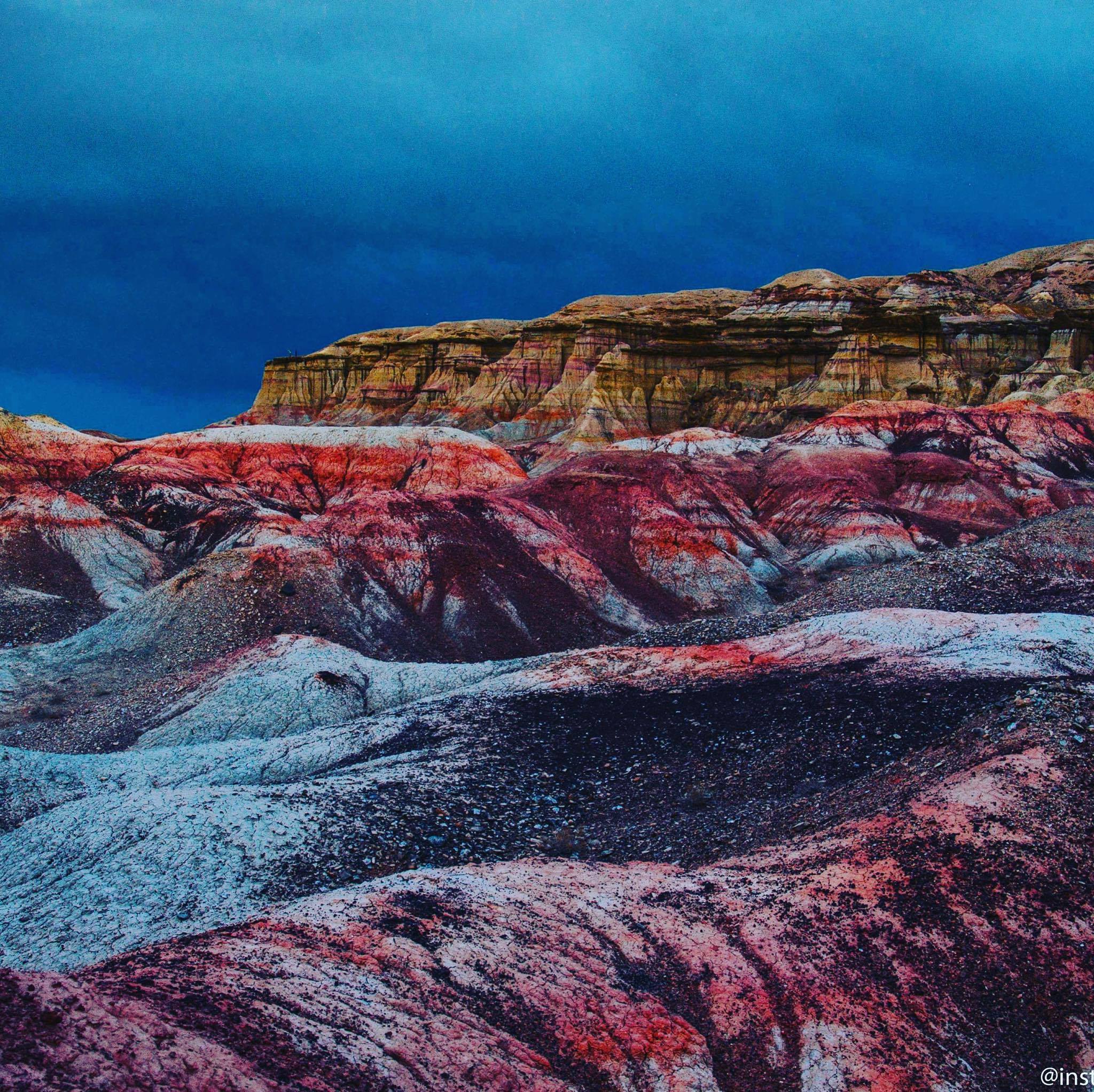
-
Granite formations of Baga Gazriin Chuluu
White stupa– Baga Gazriin Chuluu 230km
- Visit one of the few rocky mountains of Gobi, Baga Gazriin Chuluu where you will find gorgeous looking granite rock formations shaped in different forms eroded by wind and other violent elements of Gobi. During mid-18th century some high ranked and locally respected Buddhist monks lived in the area, as evidence of their existence we will see some temple ruins and inscriptions on the rock. According to some historical sources, Chinggis Khaan also had lived here. It’s a great location for some pleasant hike.
- Overnight with a local family (B+L+D)
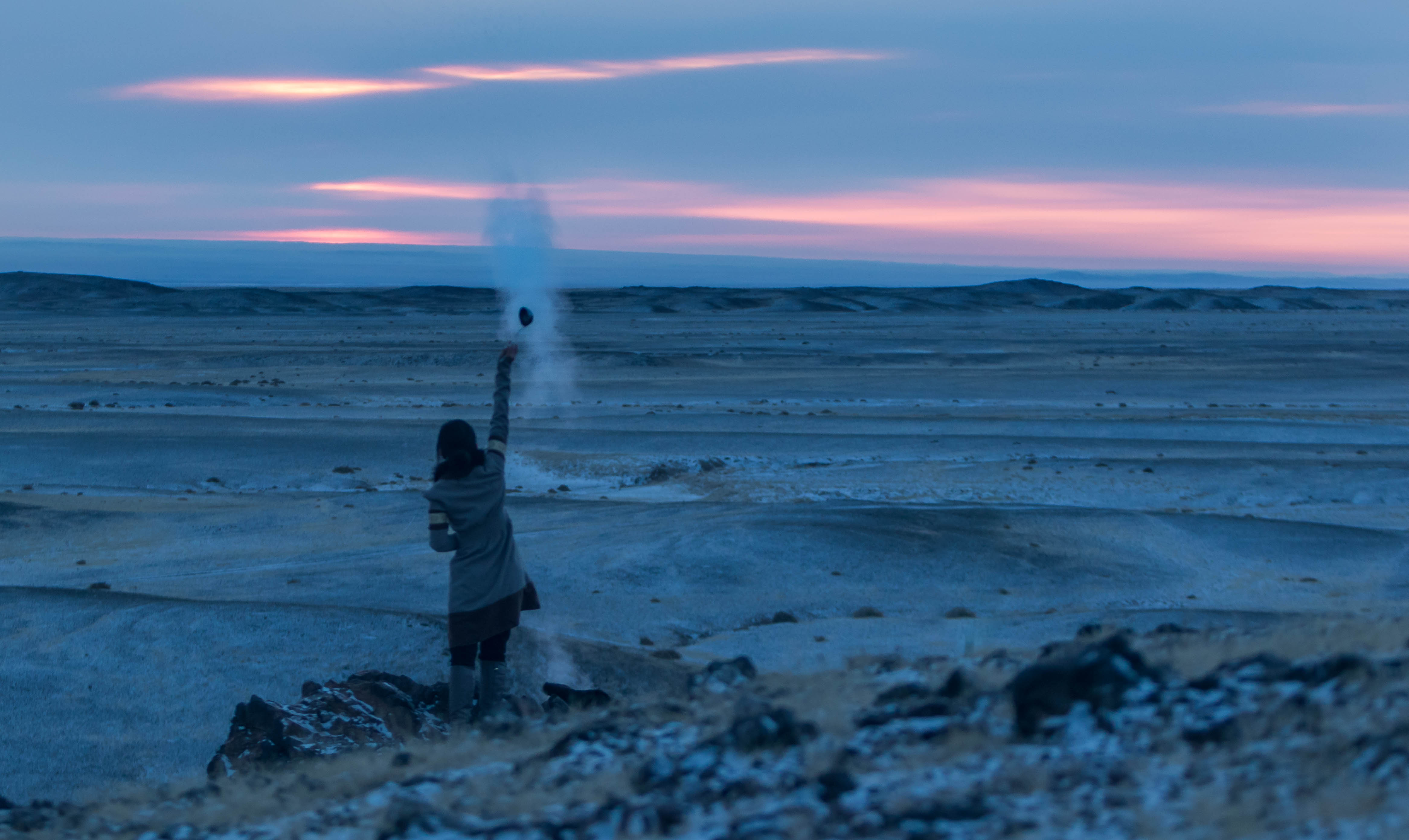
-
Back to Ulaanbaatar
Baga Gazriin Chuluu – Ulaanbaatar 250km
- Return to Ulaanbaatar
- Arrive in town, transfer to your accommodation.
- If time allows you can do some short city orientation and shopping with our guide. (B+L)
- 2Budget Arrangement
(Staying in the local ger guesthouses)
What is budget arrangement?
What is a local ger guesthouse?
| 1 pax | €2600 |
| 2 pax | €1690 p.p |
| 3 pax | €1430 p.p |
| 4 pax | €1235 p.p |
| 5 pax | €1040 p.p |
| 6-12 pax | €845 p.p |
| Single supplement: | €40 |












